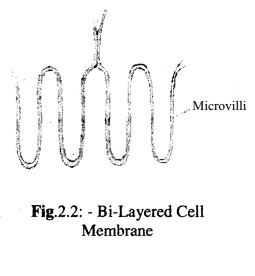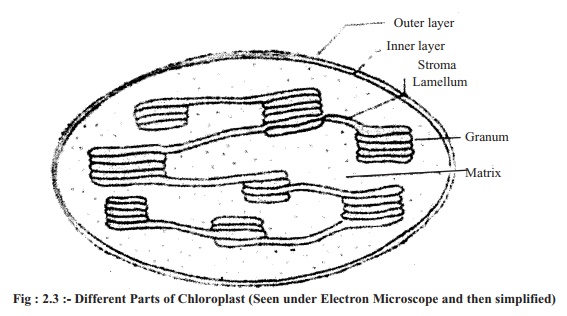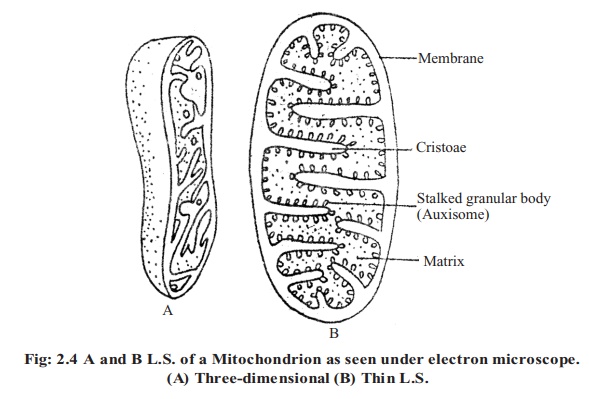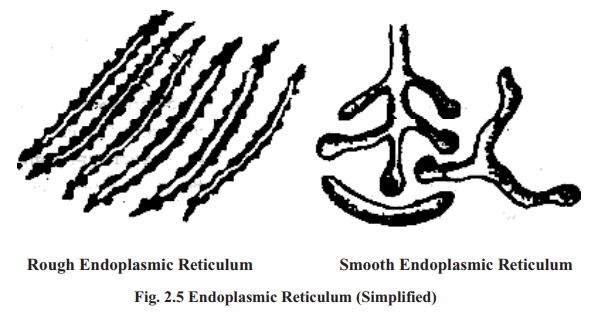Chapter: Biology: Structure and Nature of Living Cell
Cytoplasm: Stucture, Functions
Cytoplasm :
Outside the nucleus, the part of protoplasm, which is surrounded by the cell membrane, is known as cytoplasm. It is composed ofdifferent organic and inorganic compoundslike water. different nucleic acid and enzymes. The outer area of cytoplasm is more concentrate. less granular and hard, which is called Ectoplasm, and the central area, Which is less concentrated, called Endoplasm.

Different organelles like plastids, mitochondria, endoplasmic reticulum, ribosome, golgi bodies, lysosome, centrosome and different nonliving substances are present in the cytoplasm.
Function of Cytoplasm : (a) to hold different organelles and (b) to performsome organic functions.
Description of organelles present in cytoplasm is given below :
Plastid :
Plastids are largest in size among the organelles present in cytoplasm. They can be seen clearly under microscope. Plastids are not present in Fungi, Bacteria and Animal cells.
Plastids are mainly of two types: Leucoplastid or Leucoplast and Chromoplastid or Chromoplast. Leucoplastids are colourless and Chromoplastids are coloured. Chromoplastid again is of two types Chromoplast and Chloroplast.
Leucoplast: They are colourless, as they have no pigment. Leucoplast may beconverted into Chromoplast or mainly chloroplast in contact with sunlight. In absence of light the case may be reversed.
Position: Leucoplasts are present in the cells of organs like root. undergroundstem etc. which do not come in contact with sunlight.
Shape: Leucoplast may be semicircular or tubular in shape
Function: Their function is to store food.
Chromatoplast: Chromatoplasts are green or other colour; when green, it iscalled chloroplast and when they are other colour it is called Chromoplast.
Chromoplast: They are variously coloured, other than green, mostly yellowand red in colour. They are also variable in shape. Chromoplast occurred in coloured part of plants. e.g. petals, coloured fruit and seeds, roots of carrot etc.
Function: Flowers are coloured and beautiful due to their presence.
Chloroplast: They possesses green pigments named chlorophyll in excess as aresult they are green. Other pigments are also present to some extent. Every cell may contain one or more chloroplast.
In higher plants the shapes of chloroplast is lenceolate. In Algal cells their shapes are of various types, e.g. cup shaped, spiral, reticulate, star shaped. semicircular etc.
Structure of chloroplast: The following parts make Chloroplast :
1. A bi-layered semipermiable membrane surrounds the whole chloroplast. It is composed of protein and lipid. This is called lipoprotein.
2. A hygroscopic matrix surrounded by a membrane is there. This matrix is called stroma.
3. In the stroma, 40-80 well-arranged barrel shaped grana (sing: granum) are present. In one granum there are 5-25 granum disc. Insidethe granum disc, there are spaces. Probably chlorophyll and other photosynthetic materials are present in this chamber.
4. Some granum discs of two adjacent grana are connected by minute tubular bodies, which are called stroma lamelli.
5. Many crystalline bodies are arranged in the membrane of grana disc. These are called quantosome. In the dark phase of photosynthesis, carbon-di-oxide isassimilated mainly in the quantosome.

Function: Its function is to prepare carbohydrate food by the process photosynthesis.
Mitochondria: Krebs cycle, fatty acid cycle, electron transport system etc.take place in mitochondria (sing: mitochondrion). All energy producing process occurs in mitochondria for which mitochondria are compared to the powerhouse of the cell. Number of mitochondria may vary according to the species. Normally each cell contains average 300-400 mitochondria. Their shape may be globular, rod, thread, star-shaped or ring-shaped. The outside of mitochondria is surrounded by a bi-layered membrane. The membrane is made by lipoprotein, which is enriched with lipid and protein. The outer membrane is smooth but the inner one has a series of enfolding into the inner cavity of mitochondria. These enfolding are called cristae. Small stalked granular bodies are arranged on the cristae and they are called auxisome. Various enzymes.
Endoplasmic reticulum: ER
In a mature cell a network is found in the cytoplasm. This is called endoplasmic reticulum. Endoplasmic reticulum is of two types - smooth and rough. ER having ribosome on its body is called rough endoplasmic reticulum.
Structure: They are bounded by double-layered semipermiable membrane.Normally they are branched but may occur in parallel. They are continuous with the nuclear membrane and the cell membrane. Chemically the membrane is made by lipoprotein. Small granular bodies may be present on it.
Function: They form the skeleton of protoplasm. Protein synthesis occurs inrough endoplasmic reticulum. Lipid, in alternative opinion, different hormones, glycogens etc. are synthesized in the smooth endoplasmic reticulum. They play the role of internal carrier of lipid and protein.
Ribosome:
Ribosomes are small spherical /granular organelle. They may occur freely in the cytoplasmand may be attached on the outer wall of endoplasmic reticulum.
Structure: These are spherical andbounded by double layered membrane. Mostly they are made by protein.

Function: In ribosome various amino acids are combined to synthesize protein.
Golgi bodies/Golgi apparatus:
Golgi bodies may be flat, spherical or elongated. Normally they are present near the nucleus. It was first observed by a scientist named Golgi in 1898 AD in the nerve cells of owl and cat. This organelle is afterward named Golgi apparatus after his name. In plant cells their number is small for which it is not always visible under microscope.
Structure: Golgi apparatus is tubular, small vesicle, vacuolar, elongated vessellike or lamillar bodies. They are vacuolar space bounded by double-layered membrane.
necessary for respiration are well arranged in auxisome. About 70 types of enzymes and 14 types of co-enzymes are present in it. Matrix is also present inside the free space of mitochondria. The main function of mitochondria is to produce energy, like- respiration, oxidative phosphorilation, electron transport system etc.


Function: Function of Golgi bodies are- synthesis of lysosome and non-proteinsubstances, releasing some enzymes, expelling cell water and attaching substances to its membrane produced by endoplasmic reticulum.
Lysosome:
Lysosome is formed by various enzyme bounded by a membrane. Normally they are spherical. Their membrane is bi-layered.
Function: Their functions are phagocytosis i.e. to eat the invading enemy inthe cell, to protect different organelles in the cell by dissolving enzymes and to help in digestion.
Centrosome:
In animal cell there is a spherical body outside the nucleus, which is called centrosome. The fluid by which it is composed is called centrosphere. At the center of centrosphere there are two cylindrical objects called centriole. At the time of cell division the pair of centriole is separated and moves to two opposite pole (of the cell).
Function: At the time of cell division centrosome directs the poles of spindleapparatus and help in cell division.
Vacuole:
The open spaces that found in the cytoplasm is the vacuole. In immature cell their number are many and small in size. But in a mature cell all the vacuoles combined together to form a large vacuole. The thin membrane that covers the vacuole is called tonoplast. The internal fluid of the vacuole is called cell sap. Different kind of inorganic salts, organic acid, carbohydrate, protein, fat, various complex substances and various colour are present in the cell sap.
Related Topics